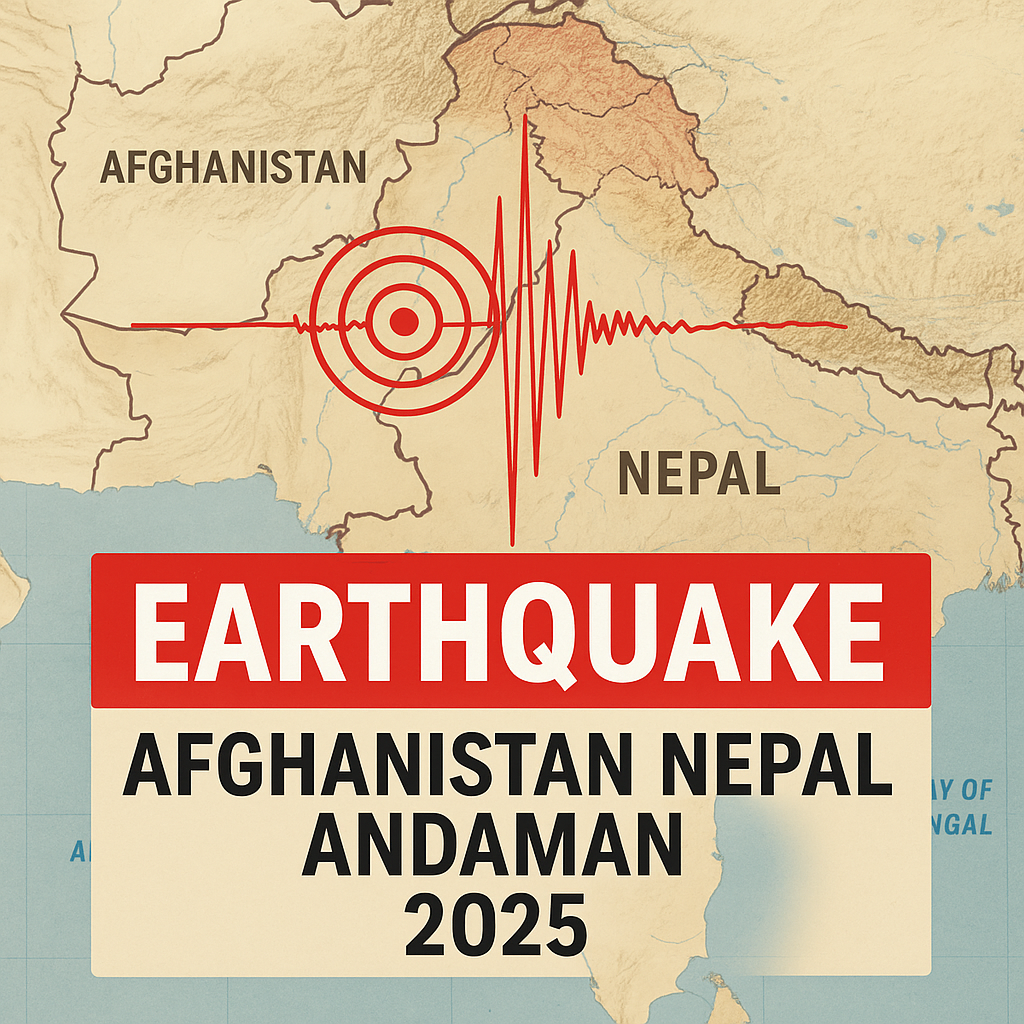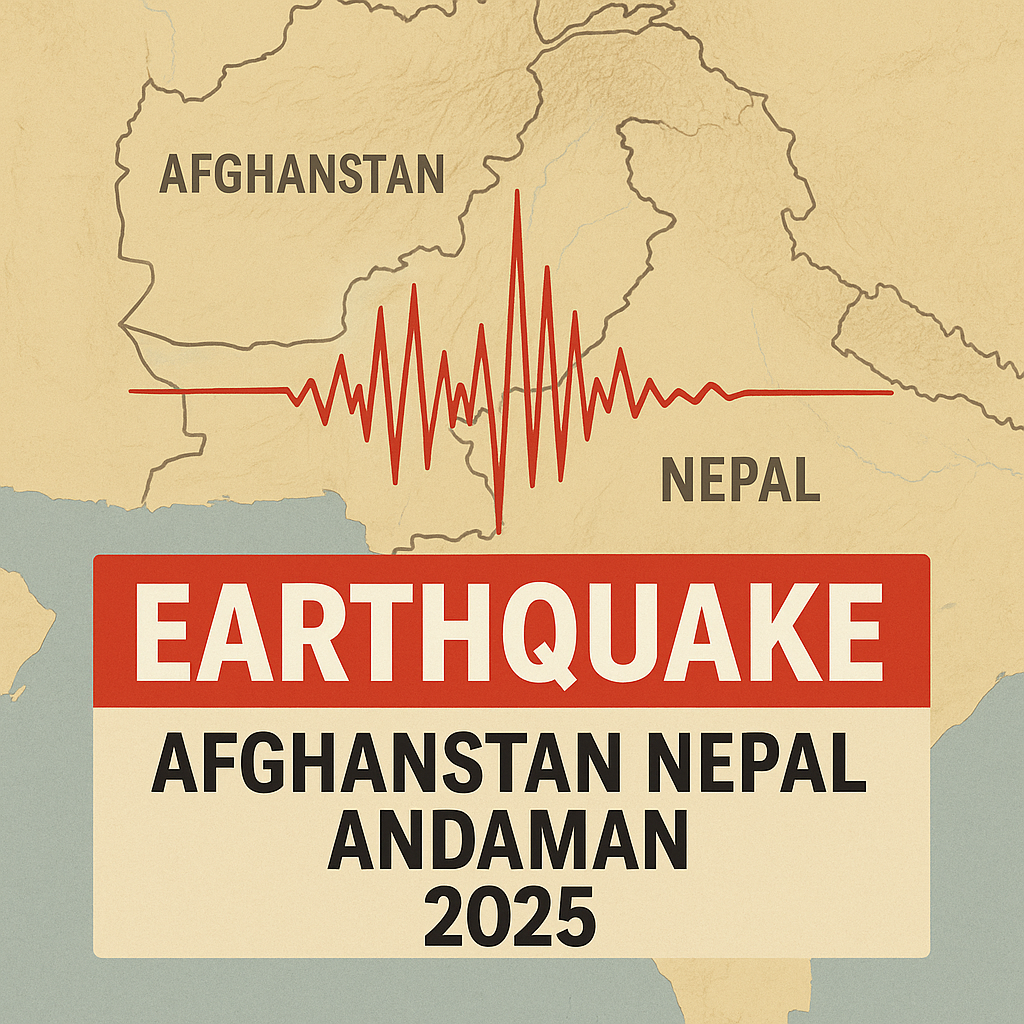Earthquake in Afghanistan Nepal Andaman 2025 triggered alarm across South Asia as several moderate earthquakes struck Afghanistan, Nepal, and the Andaman Sea on June 30, according to the National Center for Seismology (NCS). The events, though moderate in magnitude, were shallow in depth—making them potentially more destructive due to the intense ground shaking they can cause.
A 4.9-magnitude earthquake in Afghanistan Nepal Andaman 2025 was recorded at 08:02:35 IST on June 30 in Afghanistan. The quake originated at a shallow depth of just 10 kilometers, as per the NCS, which makes it prone to aftershocks. The coordinates were noted as Latitude: 36.77 N and Longitude: 71.13 E.
This earthquake in Afghanistan Nepal Andaman 2025 followed another event just two days earlier. On June 28, a 4.3-magnitude earthquake had shaken the same region at a depth of 120 kilometers, as per the NCS’s official post.
Experts warn of aftershocks and rising seismic risks across South Asia
Experts highlight that shallow earthquakes like the one reported in earthquake in Afghanistan Nepal Andaman 2025 are more dangerous than deeper ones. The reason lies in their greater energy release near the surface, leading to intense ground motion and higher chances of structural damage and casualties. Afghanistan, particularly the Hindu Kush region, is seismically active and frequently experiences earthquakes due to the complex tectonic interactions between the Indian and Eurasian plates. The Red Cross and UNOCHA have consistently warned that Afghanistan’s long-standing conflict and underdeveloped infrastructure make it highly vulnerable to natural disasters.
Similarly, Nepal too experienced tremors as part of earthquake in Afghanistan Nepal Andaman 2025 events. A 3.9-magnitude quake was recorded at 08:24:21 IST on June 30, with its epicenter at 29.24 N latitude and 81.77 E longitude and a depth of 14 kilometers. Just a day earlier, a 4.2-magnitude earthquake struck Nepal on June 29 at 14:19:05 IST at a depth of 10 kilometers. These shallow quakes pose increased threats to populated areas.
Nepal is known for its susceptibility to seismic activity because it sits on a convergent boundary where the Indian plate is subducting beneath the Eurasian plate. The Himalayan region is a hotspot for tectonic stress and strain, making the country especially vulnerable. The 2015 earthquake is a reminder of the catastrophic outcomes of such seismic events. In memory of the 8,969 lives lost during that tragedy, Nepali Prime Minister KP Sharma Oli had stood in silence earlier this year.
Also read :- Earthquake of Magnitude 3.5 Strikes Manipur: Know the Full Details
The earthquake in Afghanistan Nepal Andaman 2025 series didn’t spare the Indian region either. On June 30, at 10:09 am, a 4.7-magnitude earthquake struck the Andaman Sea at a depth of 10 kilometers. Within an hour, a second earthquake measuring 4.6 was recorded in the same region at 11:22 am. Both incidents are part of a pattern observed in the last few days. An earlier earthquake measuring 4.2 had hit the Andaman Sea on June 25 at a depth of 20 kilometers.
Also read :- Earthquake Today 3.9 Magnitude Shakes Nepal
Seismic Belt Activity Worsening in 2025
These tremors from the earthquake in Afghanistan Nepal Andaman 2025 come as no surprise to seismologists. The Andaman Sea lies within Seismic Zone V, India’s highest-risk seismic zone. This region forms part of the broader Alpine-Himalayan seismic belt, which is among the most active in the world. According to the Ministry of Earth Sciences, this belt extends to the Andaman-Nicobar Islands and contributes to frequent seismic disturbances.

With the repeated earthquakes in Afghanistan, Nepal, and the Andaman region under the earthquake in Afghanistan Nepal Andaman 2025 timeline, concerns have heightened for vulnerable communities that are often unprepared for such disasters. UNOCHA noted that these regions already face challenges from poverty, conflict, and limited infrastructure, reducing their capacity to respond to and recover from disasters effectively.
In conclusion, earthquake in Afghanistan Nepal Andaman 2025 marks a critical reminder of the geological volatility across South Asia. With shallow-depth earthquakes occurring frequently, especially in seismically active zones, regional governments must prioritize early warning systems, earthquake-resistant infrastructure, and public awareness to mitigate the risks of future quakes.


[…] Earthquake in Afghanistan Nepal Andaman 2025: Multiple Moderate Tremors Shake South Asia, Raise Seis… […]